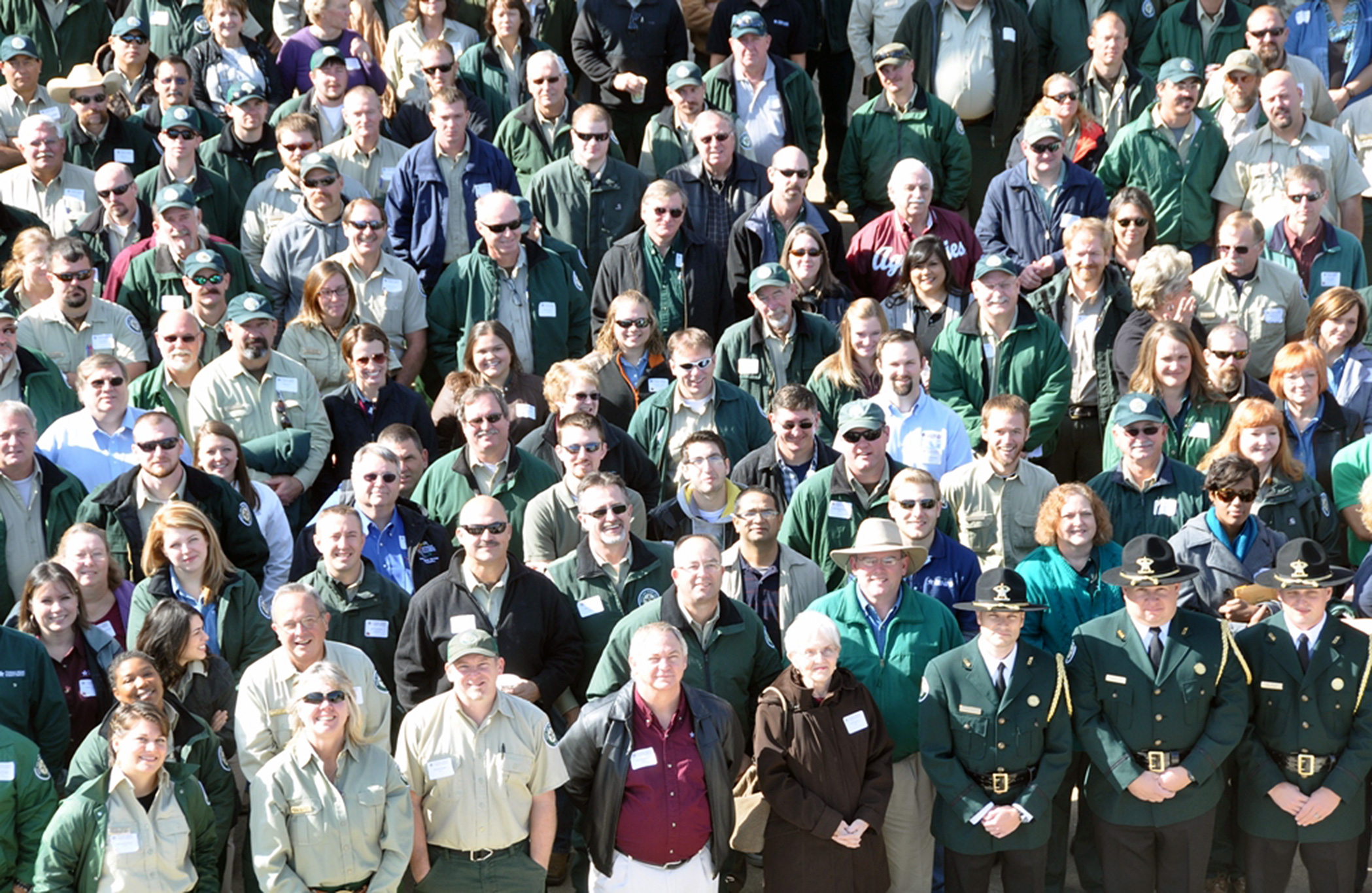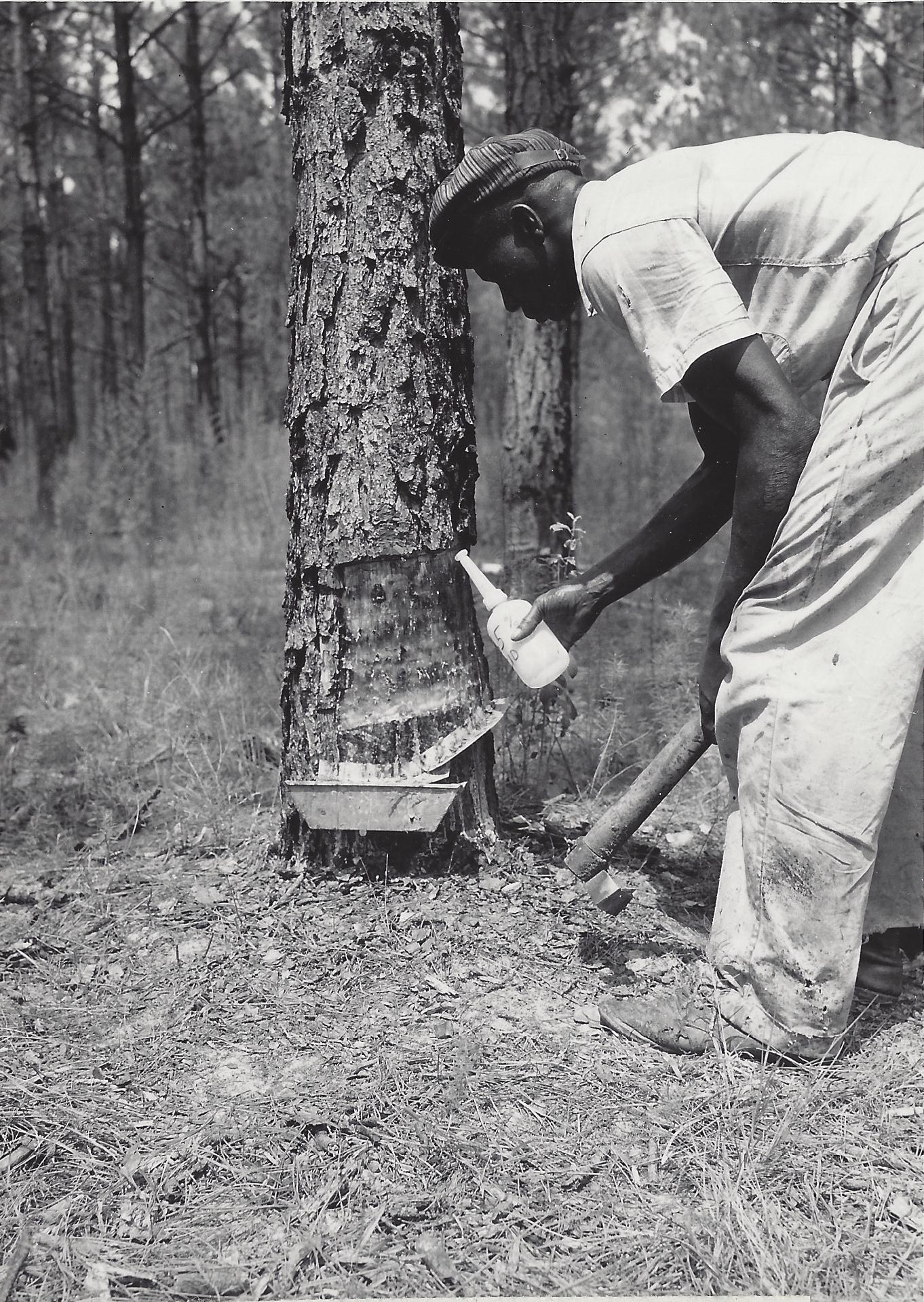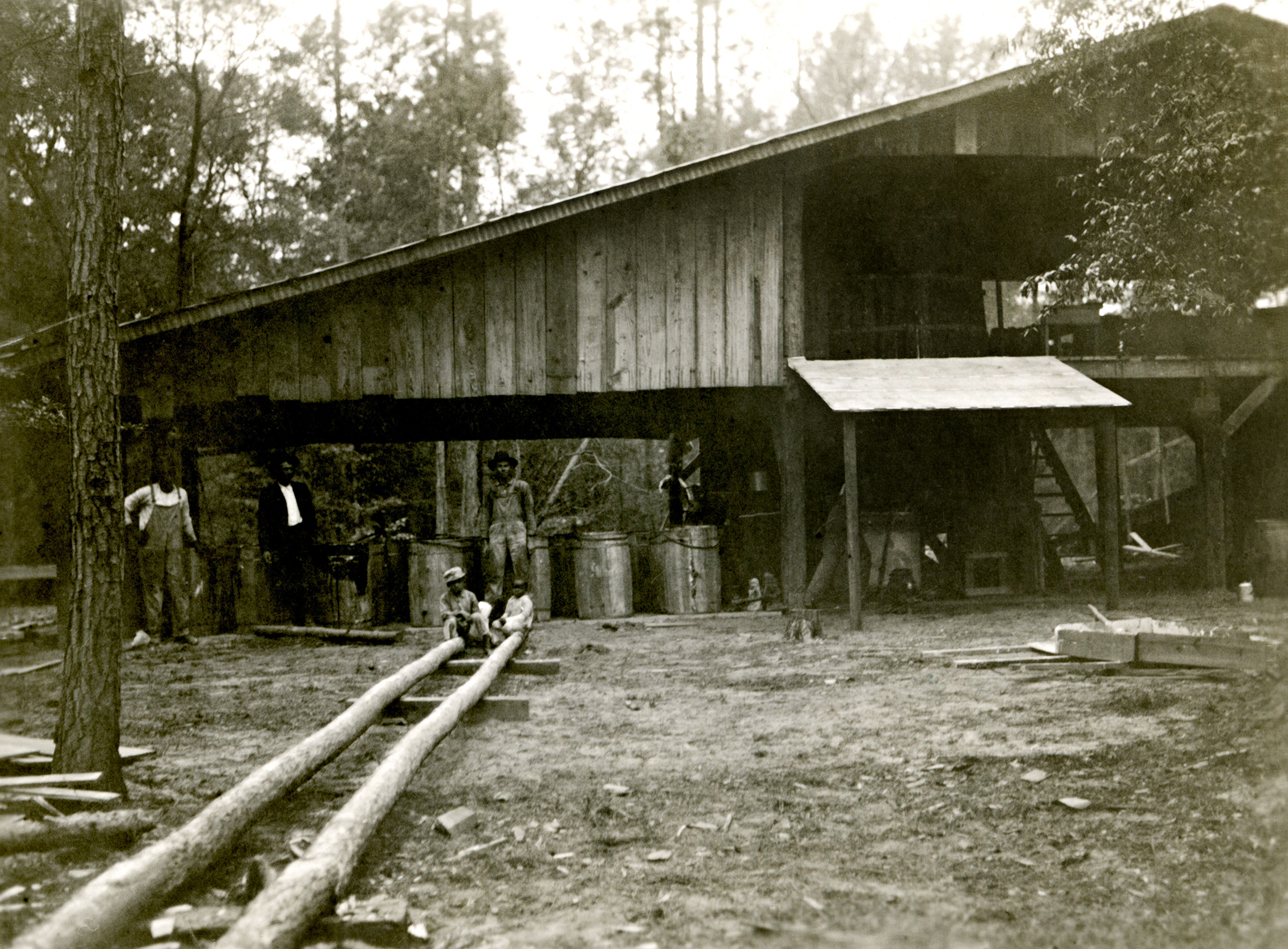

Before all the virgin longleaf pine trees fell to the crosscut saw, some served as a source for another forest product industry. The abundant resin or “pine sap” was extracted from live, standing longleaf pines and distilled to make turpentine.

In Jasper County, Western Naval Stores established a small town named Turpentine in 1907 as the mother camp for 16 subsidiary turpentine camps in East Texas. Like numerous lumber towns such as Manning in Angelina County, Aldrich in Jasper County and Adsul in Newton County, Turpentine was soon a ghost town, being abandoned by 1918.
Turpentine trees were worked from March through October or November while the pitch flowed. A V-shaped cut was carved into one side of the trunk and another cut was added each week or two during the season, creating a chevron effect or “face” on the side of the tree. The tree would respond to the wounds by producing copious flows of resin.
The grooves served to channel the resin into a clay or tin collection tray attached at the base of the scar. The resin in the tray was emptied periodically into a large barrel and carted off to a distillery for processing into gum turpentine, rosin and other naval store products. The term “naval stores” came about because the tar and processed resin from pine trees was used to seal the hulls and decks of early wooden naval ships. Wounding trees to extract resin for turpentine production caused adverse side effects. The exposed scars rendered these trees highly susceptible to injury or death from wildfires, more so than unwounded trees. The resin odors from fresh wounds also attracted native bark beetles. Indeed, the common name “black turpentine beetle” denotes not only the color of Dendroctonus terebrans, but also this beetle’s affinity for trees used for production of naval stores.

The turpentine industry in Texas and throughout the South declined after the “bonanza era” of logging drastically reduced the abundance and availability of mature longleaf pines. Production of synthetic turpentine would eventually put most pine resin stills out of business throughout the South. In a final gasp to resurrect a dying industry, TFS administered a federal naval stores subsidy to landowners in Jasper and Newton counties in 1961.
Photos courtesy of Texas Forestry Museum and Stephen F. Austin State University
